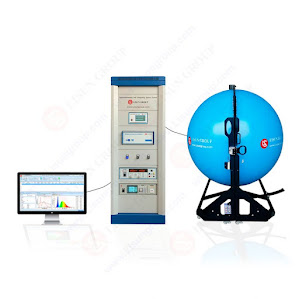LISUN Ulbricht sphere for photometric, colorimetric and electrical measurement of LED lamp
A device that is used for photometric, colorimetric, and electrical measurements of LED bulbs is referred to as an Ulbricht sphere. An integrating sphere is another name for an Ulbricht sphere.
Photometric measurements:
An Ulbricht sphere is used in the process of measuring the total luminous flux
of an LED lamp. This is accomplished by catching the light generated by the LED
and dispersing it uniformly throughout the interior surface of the sphere.
After that, a photometer is used in order to determine the overall output of
light at the entrance of the sphere, which is afterwards transformed into a
value of luminous flux (expressed in lumens).
Measurements in colorimetry:
The Ulbricht sphere is also suitable for determining the color rendering index
(CRI) of an LED light source. A light source's Color Rendering Index (CRI) is a
measurement of how well it can reproduce the colors of different objects.
Because of the sphere's contribution to the more uniform distribution of the
light, it was possible to get more precise readings of the color.
In addition to being used
for photometric and colorimetric measurements, the Ulbricht sphere is also
capable of measuring the electrical properties of an LED lamp, such as the
lamp's forward voltage, forward current, and power consumption. These
properties can be measured by using the Ulbricht sphere. These measurements are
taken with the LED lamp connected to electrical measuring equipment, and the
sphere helps to eliminate any errors that may have been introduced by the
angular emission patterns of the LED. These measurements are taken with the LED
lamp connected to electrical measuring equipment.
In general, the use of an
Ulbricht sphere enables precise and accurate measurements of the luminous flux,
color rendering, and electrical properties of an LED light.
.jpg)


Comments
Post a Comment